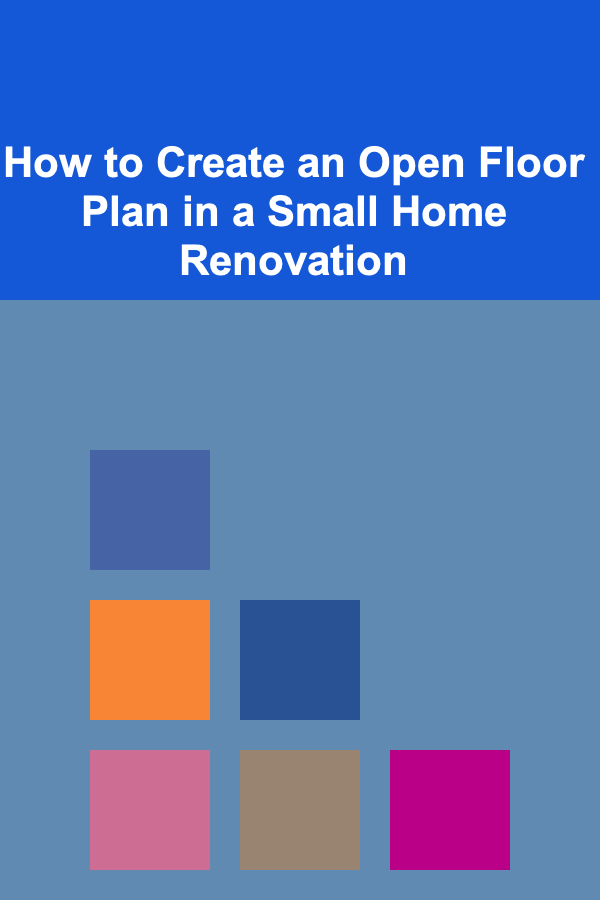
How to Use Print on Demand Services to Sell T-Shirts with No Inventory
ebook include PDF & Audio bundle (Micro Guide)
$12.99$8.99
Limited Time Offer! Order within the next:

Starting a t-shirt business can seem like an exciting venture, but the logistical challenges often discourage many budding entrepreneurs. Traditional retail models require you to purchase inventory upfront, manage stock, and deal with shipping issues. However, thanks to the rise of print on demand (POD) services, you can now sell custom t-shirts online without worrying about inventory or fulfillment.
Print on demand allows you to focus on designing and marketing, while a third-party service handles printing, packing, and shipping your products directly to customers. This low-risk business model has democratized e-commerce, making it easier than ever to start a business with minimal investment.
In this guide, we'll walk you through how to use print on demand services to sell t-shirts with no inventory, step-by-step, from setting up your online store to marketing and optimizing your operations.
Step 1: Choose the Right Print on Demand Platform
The first step in starting your print on demand t-shirt business is choosing the right platform. The quality of the service you choose can directly affect your customers' satisfaction, delivery times, and ultimately, your reputation. Below are some popular POD services for t-shirts:
1.1 Popular POD Platforms
- Printful: One of the most well-known platforms in the POD industry, Printful offers a wide range of t-shirts, printing options, and fulfillment services. It integrates with platforms like Shopify, Etsy, and WooCommerce, allowing you to easily set up your store and start selling.
- Printify: Printify provides access to a global network of print providers, giving you the option to choose printers based on your location and preferred quality standards. It also integrates with major e-commerce platforms and is known for its competitive pricing.
- TeeSpring (now Spring): TeeSpring is a dedicated POD platform focused on apparel, including t-shirts. It provides an easy-to-use platform for beginners and is known for its marketing features, such as integrated social media tools.
- Gooten: Gooten offers similar services to Printful and Printify but with a slightly smaller selection of products. However, they provide a smooth order management system and competitive pricing.
When selecting a platform, consider factors such as:
- Product range: Ensure the platform offers a wide variety of t-shirt options (sizes, colors, materials).
- Shipping time: Look for a service with quick and reliable shipping to ensure customer satisfaction.
- Integration with e-commerce platforms: Choose a POD provider that easily integrates with your chosen e-commerce platform (Shopify, Etsy, WooCommerce, etc.).
- Print quality: Read reviews and request samples to check the print quality before committing.
Step 2: Design Your T-Shirts
Once you've chosen a print on demand provider, it's time to start designing your t-shirts. The success of your store will largely depend on your designs, so take time to create unique, high-quality artwork that resonates with your target audience.
2.1 Tools for Designing T-Shirts
- Adobe Photoshop/Illustrator: These are the industry-standard tools for designing t-shirts. They offer advanced features but require a learning curve.
- Canva: If you're looking for an easier option, Canva offers an intuitive interface with pre-made templates that are perfect for beginners.
- Procreate: If you're an artist who prefers drawing by hand, Procreate on an iPad is a fantastic option for creating original designs.
2.2 Design Tips
- Target your audience: Your designs should appeal to a specific demographic. For example, if you are targeting fitness enthusiasts, design t-shirts with motivational quotes or cool gym-related illustrations.
- Keep it simple: Often, simple designs with bold text or minimalistic graphics perform better in the t-shirt market. Think of iconic designs like plain logos or powerful quotes.
- Test before mass production: Print on demand lets you test designs with no upfront cost. Upload a few designs and see how they perform in terms of sales before committing to more extensive designs.
2.3 Design Software Considerations
When creating designs, aim for high-resolution files (at least 300 DPI) and ensure the file is in the appropriate format (usually PNG or vector files like SVG or EPS). This ensures the best quality prints without pixelation.
Step 3: Set Up Your Online Store
The next step is to create an online store where customers can browse your designs and make purchases. The beauty of print on demand is that you don't need to worry about inventory, as your t-shirts are printed on-demand once an order is placed.
3.1 Choose Your E-Commerce Platform
Some of the most popular e-commerce platforms for selling print on demand t-shirts include:
- Shopify: One of the most popular e-commerce platforms, Shopify is easy to use and integrates seamlessly with most POD services.
- Etsy: A marketplace perfect for those looking to sell unique, handmade, or custom designs. It has built-in traffic but also competition.
- WooCommerce: If you already have a WordPress site, WooCommerce is a great option for integrating your POD service.
- Big Cartel: This platform is simple and offers basic e-commerce features, making it a great choice for new sellers.
3.2 Customize Your Store
Once you've selected your platform, it's time to set up your store:
- Store design: Choose a theme that complements your brand and makes it easy for customers to navigate your product offerings.
- Add product listings: Upload your t-shirt designs with descriptions and high-quality product images. Be sure to add relevant tags and categories to help customers find your products.
- Pricing: Set competitive pricing for your products, ensuring that you account for the POD platform's production cost and your desired profit margin.
3.3 Integrate with Print on Demand
Your e-commerce platform should seamlessly integrate with your chosen POD service. For instance, Shopify makes it easy to connect with platforms like Printful or Printify, automatically syncing product orders and fulfillment. Most POD services offer simple integration steps, so your store and POD platform will work together without much effort on your part.
Step 4: Marketing Your T-Shirt Business
Now that your store is set up, it's time to drive traffic and sales to your online shop. Marketing is key to building a successful print on demand t-shirt business.
4.1 Leverage Social Media
- Instagram: Since t-shirts are a visually-driven product, Instagram is a perfect platform for showcasing your designs. Post high-quality images, behind-the-scenes content, and customer photos to build a following. You can also use Instagram Ads to target specific audiences.
- Facebook: Facebook Ads can help you reach broader demographics with specific targeting options based on interests, location, and behaviors. Use dynamic ads to showcase your t-shirts in various settings.
- Pinterest: Pinterest is ideal for discovering new products. Share your designs on pins and join relevant boards or create your own boards to target specific niches.
4.2 Influencer Marketing
Partner with influencers in your niche to promote your t-shirts. Influencers can provide social proof and drive significant traffic to your store. Reach out to micro-influencers who have a strong, engaged following and offer them free products or commission-based deals for promoting your designs.
4.3 Run Paid Ads
Paid advertising is one of the quickest ways to drive traffic to your store. Platforms like Facebook, Instagram, and Google Ads allow you to run targeted campaigns to reach potential customers. Start small and test different ad creatives, audiences, and placements to optimize your campaigns.
4.4 Email Marketing
Once you start building an audience, email marketing can be a powerful tool for increasing customer retention. Collect emails through opt-ins on your website and send regular newsletters with new designs, promotions, and exclusive offers.
Step 5: Fulfillment and Customer Service
One of the advantages of using POD is that fulfillment is handled by the print provider, meaning you don't need to worry about shipping or inventory management. However, you still need to focus on customer service.
5.1 Monitor Orders and Shipping
Ensure that your print on demand provider is fulfilling orders in a timely manner. Most services provide tracking numbers that you can share with customers, so they can check their order status.
5.2 Handle Customer Inquiries
Even though POD services handle the fulfillment process, you are still responsible for customer service. Be prompt in responding to customer inquiries regarding sizing, shipping, and product quality.
5.3 Keep Your Store Updated
Regularly update your t-shirt designs to keep your store fresh and appealing. Introduce new designs based on customer feedback or trends to keep your audience engaged.
Conclusion
Selling t-shirts with print on demand services is an excellent way to start an online business without the burden of managing inventory or fulfillment. By choosing the right POD provider, creating high-quality designs, setting up an optimized online store, and using effective marketing strategies, you can build a successful t-shirt business with minimal upfront investment.
Remember, success in POD relies on consistency, creativity, and continuous improvement. Keep testing different designs, refining your marketing strategies, and improving your customer experience to ensure your brand's growth over time. With the right approach, you can turn your passion for design into a profitable online business.
Reading More From Our Other Websites
- [Home Lighting 101] How to Use Lighting to Create the Perfect Ambiance for Entertaining
- [Organization Tip 101] How to Create a Family-Friendly Essential Oil Storage System
- [Ziplining Tip 101] Elevate Your Spirits: Science-Backed Reasons Ziplining Improves Mental Well-Being
- [Personal Care Tips 101] How to Create a Smooth, Polished Look with Hair Gel for Special Occasions
- [Home Storage Solution 101] How to Design a Custom Closet Storage System with Adjustable Shelves
- [Small Business 101] Best Zero‑Waste Packaging Strategies for Eco‑Friendly Small Retail Shops
- [Home Storage Solution 101] How to Build DIY Storage Solutions for Your Garage
- [Personal Care Tips 101] How to Add Hold and Body to Your Hair with Hair Mousse
- [Home Space Saving 101] How to Create a Spacious Home Office in a Small Area
- [Home Budget 101] How to Save Money on Childcare and Other Family Expenses

How to Create a Garden Pathway with Proper Planning
Read More
How to Create an Open Floor Plan in a Small Home Renovation
Read More
How to Organize Photography and Memories the Minimalist Way
Read More
How to Build Endurance for Running
Read More
How To Boost Your Cognitive Function
Read More
How to Build a Content Writing Portfolio with No Experience
Read MoreOther Products

How to Create a Garden Pathway with Proper Planning
Read More
How to Create an Open Floor Plan in a Small Home Renovation
Read More
How to Organize Photography and Memories the Minimalist Way
Read More
How to Build Endurance for Running
Read More
How To Boost Your Cognitive Function
Read More